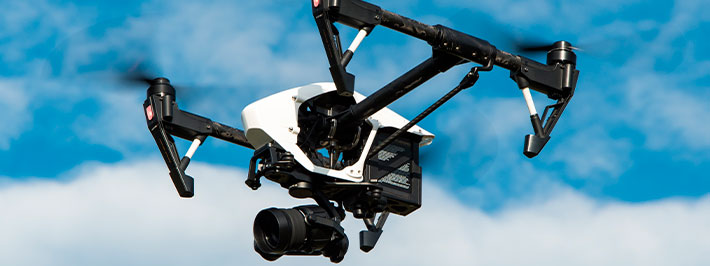
Will taxis be flying around the world soon?
On June 24, the German flying taxi manufacturer Volocopter was authorized to conduct test flights of its electric aircraft, in limited areas by the European Aviation Safety Agency (EASA). An unprecedented situation in the European Union for this expanding market, which could reach 4.2 billion dollars in Europe in 2035.
According to a report by the European Aviation Safety Agency (EASA), the flying taxi market could generate 4.2 billion in 2035 in Europe. It is not surreal as EASA has just given its first green light to a German manufacturer to test its electric aircraft.
Shortly before receiving its certificate, the Bruchsal-based company Volocopter flew two of its aircraft, including the VoloCity flying taxi, in a real-life situation at the French airfield at Le Bourget. The latter is a fully electric aircraft, with 18 engines and nine batteries. It is capable of transporting a passenger plus the pilot at a speed of 110 km / h, with an altitude of 400 to 500 meters over a maximum of 35 km. The German company hopes to commercialize its VoloCity by 2030.
The launch of Volocopter has attracted other companies in the air mobility sector. In addition, the European agency expects to process "a large number of design verification requests in the coming months."
Global interest
This type of machine enters a new category of light and quiet electric aircraft that can take off and land vertically, called eVTOL, electric vertical take-off and landing.
In 2019, one company identified around 170 eVTOL aircraft prototypes. Even if the main goal is to reduce ground traffic in big cities, this type of machine could play an important role in transporting the injured or medicine to hospitals, or even offering faster delivery services.
The US airline United Airlines has placed an order for billions of dollars from a Californian company for the purchase of a hundred flying taxis. To produce them on a large scale, the company has partnered with Stellantis, the parent company of PSA and Fiat Chrysler. A first device, called the Maker, also saw the light of day on June 10. It can fly at 240 km / h for distances up to 100 km.
A promising market also in Asia: the Chinese company EHang is developing an autonomous flying taxi to offer it as a commercial service for the transport of people and goods. In Korea, Hyundai has partnered with Uber to build flying taxis.
Several cities in Europe, including Paris, Düsseldorf, Seville and Helsinki, have announced the deployment of services based on the use of flying taxis. According to the EASA study, the flying taxi market will generate 90,000 jobs in Europe.
Better for the environment?
The ecological theme will depend on the distance and the number of passengers. This is what a study from the University of Michigan reveals. Comparing the electric flying car and the thermal car, we realize several things: if the eVTOL carries only one passenger over a distance of less than 35 km, the thermal car emits less CO2. On the other hand, if the thermal car and the electric car carried 1.54 passengers (which is the case on average in the US) vs. 3 passengers (driver not included) for a 100 km trip, the flying car would be a 52% cleaner than thermal cars and 6% greener than electric cars.